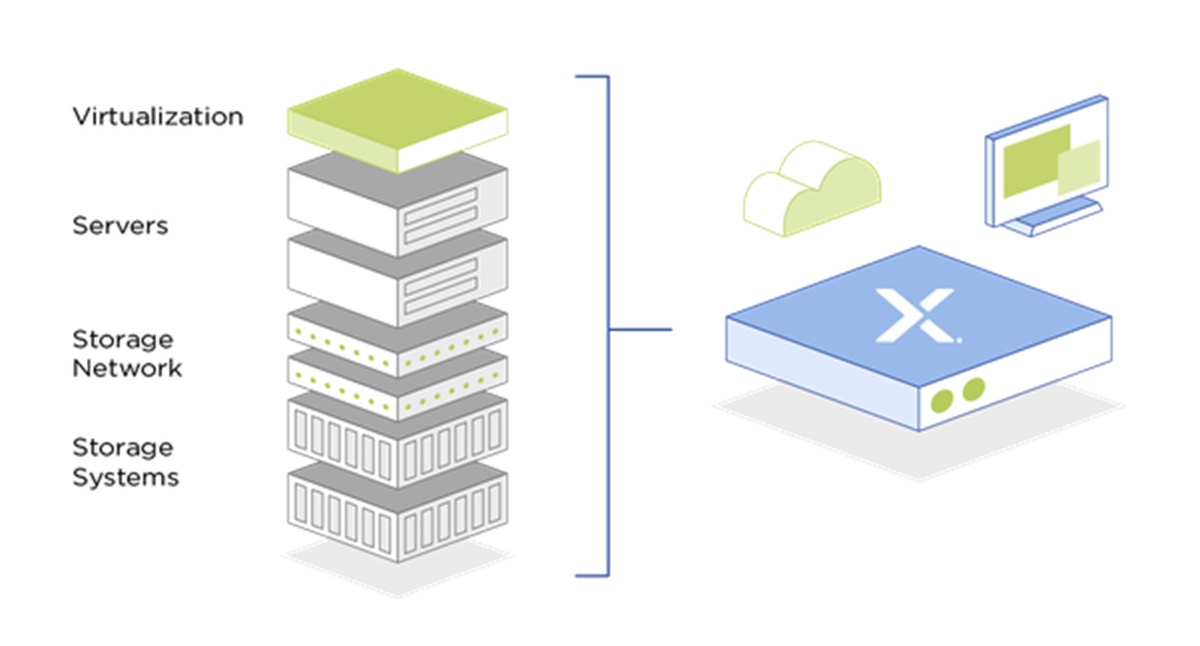Introduction:
Hyperconvergence has emerged as a transformative technology in the realm of data center management, offering a seamless integration of compute, storage, and networking resources within a single, cohesive infrastructure. Among the leading solutions in this space, Nutanix AHV and VMware vSAN stand out as robust contenders, each with its own set of features and capabilities. In this article, we will conduct an in-depth comparative analysis of Nutanix AHV and VMware vSAN to help organizations make informed decisions when selecting a hyperconverged infrastructure (HCI) platform.
Overview of Nutanix AHV:
Nutanix AHV is the hypervisor component of the Nutanix Enterprise Cloud platform, designed to provide a scalable and resilient infrastructure for virtualized workloads. Nutanix AHV utilizes the Acropolis Distributed Storage Fabric (ADSF) to deliver high-performance storage services across the hyperconverged cluster. Nutanix's focus on simplicity, scalability, and integration has made AHV a popular choice for organizations seeking a comprehensive HCI solution.
Key Features of Nutanix AHV:
- Integrated Hypervisor: Nutanix AHV is tightly integrated with the Nutanix platform, allowing for a seamless user experience and simplified management.
- Scale-Out Architecture: Nutanix AHV enables organizations to scale their infrastructure horizontally by adding nodes, providing flexibility in resource expansion.
- Acropolis Distributed Storage Fabric (ADSF): Nutanix's distributed storage fabric ensures data resilience, high availability, and efficient storage management.
- Prism Management Interface: The Prism interface offers a user-friendly, centralized management console for monitoring and controlling the entire hyperconverged environment.
Overview of VMware vSAN:
VMware vSAN is an integral part of the VMware vSphere suite, delivering HCI capabilities by converging compute and storage resources. As a leading player in the virtualization space, VMware has extended its reach into hyperconvergence, offering vSAN as a robust solution for organizations looking to simplify their infrastructure and enhance scalability.
Key Features of VMware vSAN:
- Native Integration with vSphere: VMware vSAN seamlessly integrates with the VMware vSphere ecosystem, providing a familiar environment for users already leveraging VMware technologies.
- HCI Mesh: vSAN introduces HCI Mesh, allowing organizations to pool resources and extend the HCI cluster across different physical locations for improved flexibility.
- Deduplication and Compression: VMware vSAN incorporates data reduction technologies, such as deduplication and compression, to optimize storage efficiency and reduce the overall storage footprint.
- Robust Ecosystem: VMware vSAN benefits from a vast ecosystem of third-party integrations and a strong community, providing additional support and compatibility.
Comparative Analysis:
-
Integration and Ecosystem:
- Nutanix AHV: Offers seamless integration within the Nutanix Enterprise Cloud platform, providing a holistic approach to HCI. While the ecosystem is robust, it may not have the extensive third-party support compared to VMware.
- VMware vSAN: Native integration with the vSphere ecosystem provides a familiar environment for VMware users. The extensive ecosystem and community support contribute to VMware's popularity.
-
Scalability:
- Nutanix AHV: Utilizes a scale-out architecture, allowing organizations to add nodes to expand resources horizontally. Nutanix AHV's approach to scalability is well-suited for dynamic workloads and evolving infrastructure needs.
- VMware vSAN: Offers scalability through the addition of nodes within the vSAN cluster. The HCI Mesh feature further enhances flexibility by extending the cluster across different locations.
-
Storage Efficiency:
- Nutanix AHV: Leverages the Acropolis Distributed Storage Fabric to provide efficient storage services. Nutanix AHV supports data reduction techniques, contributing to improved storage efficiency.
- VMware vSAN: Incorporates deduplication and compression technologies to optimize storage efficiency, reducing the overall storage footprint and enhancing performance.
-
Management Interface:
- Nutanix AHV: Prism serves as the central management interface for Nutanix AHV, offering a user-friendly experience with comprehensive monitoring and control capabilities.
- VMware vSAN: vCenter is the management interface for VMware vSAN, providing a familiar environment for vSphere users with robust management features.
Conclusion:
Choosing between Nutanix AHV and VMware vSAN requires a careful consideration of organizational requirements, existing infrastructure, and preferences. Nutanix AHV excels in its simplicity and integration within the Nutanix ecosystem, while VMware vSAN benefits from its native integration with vSphere and a vast partner ecosystem.
Ultimately, the decision comes down to specific business needs, existing technology investments, and the level of integration and support required. Both Nutanix AHV and VMware vSAN offer powerful hyperconverged solutions, and organizations should evaluate their unique requirements to determine the platform that best aligns with their goals for a modern, efficient, and scalable data center.


No comments yet